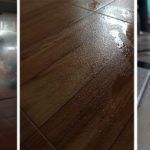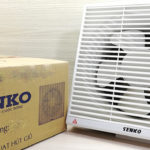6 Smart Laundry Drying Hacks for the Rainy Season
The extreme humidity in rainy seasons usually poses a challenge in drying clothes. Leaving them in the closet before they are completely dry can lead to musty odors and even mold. Here are 6 brilliant tips on how to dry your clothes quickly during the rainy season, regardless of whether you live in a house or an apartment.
1. Place Newspaper Underneath Clotheslines
Newspaper has excellent moisture absorption capabilities, which helps clothes dry faster. To enhance its moisture absorption, crinkle the newspaper before use to increase the surface area between the wet clothes and the paper, effectively doubling the absorption.

2. Hang Clothes 5 cm Apart
This provides better air circulation, allowing clothes to dry faster. If you have a lot of clothes to dry and limited drying space, consider drying them in batches or adding more clotheslines to speed up the drying process, preventing musty smells from developing.

3. Hang Clothes in a Curve
This method involves arranging your clothes on a clothesline in a curved shape. By placing the longest garments on the edges and shorter garments in the middle, you allow more air to circulate towards the center, facilitating faster drying.
4. Hang Clothes Away from the Floor and Walls
Floors and walls tend to accumulate moisture, so hanging clothes high off the ground and away from walls separates them from this moisture build-up, allowing them to dry more efficiently.

5. Hang Clothes Inside Out
Typically, the inside seams are the slowest part of a garment to dry. Turning clothes inside out while drying speeds up the process and simultaneously prevents fading.
6. Choose the Right Indoor Drying Location
– Opt for a Well-Ventilated Area
For clothes to dry in a short amount of time, choose a drying location with good air circulation and minimal obstructions. Consistent airflow facilitates the evaporation of moisture from the clothes.
– Dry Clothes Near a Light Source
Light sources that can help dry clothes faster include light bulbs, open doors, and windows. Even on overcast days, there is still some daylight that can be utilized to expedite the drying process. Additionally, light has antibacterial effects.
– Avoid Drying in the Kitchen or Bathroom
Drying clothes near the kitchen can cause them to absorb food odors. Bathrooms have high humidity levels, which only adds more moisture to the clothes, hindering the drying process.

Tips for Encouraging Faster Drying
– Use a Fan or Air Conditioner
When drying clothes indoors, you can use a fan or air conditioner to increase the rate of evaporation. These appliances create better air circulation, allowing the moisture to dissipate faster.
– Employ the Help of a Hair Dryer
A hair dryer is a great option when you need an article of clothing dry in a hurry. The warm air from the dryer effectively evaporates the moisture. However, it is a time-consuming method and is best suited for small loads and thinner garments.
– Wring Out Excess Water Before Drying
To ensure your clothes dry as quickly as possible, wring out as much water as you can before hanging them. Most washing machines have a spin cycle setting. Utilize this feature to reduce the moisture content of the clothes. Doing so significantly reduces drying time and effort.
– Avoid Overcrowding the Clothesline
Overcrowding the clothesline prevents even drying, creating a moist environment inside the garments that promotes bacteria and mold growth. Instead, space out the clothes evenly, leaving at least 5 cm between each item.
By An Nhiên – Vietnamnet



































